When it comes to backyard excavation, many homeowners have the same question: how deep can I go? The answer, of course, depends on a variety of factors. But with the right information and some careful planning, you can safely dig as deep as you need to in order to get the most out of your backyard. In this comprehensive guide, we’ll walk you through everything you need to know about digging in your yard, including what factors to consider before beginning your project and how to stay safe while excavating. Let’s get started!
Why Would You Want to Dig in Your Backyard in the First Place?
There are a few reasons why someone might want to dig in their backyard. Maybe you’re planning to install a swimming pool or hot tub and need to excavate the area first. Perhaps you’re putting in a new patio or deck and need to dig out the space for the foundation. Or, maybe you’ve just always been curious about how deep your backyard goes!
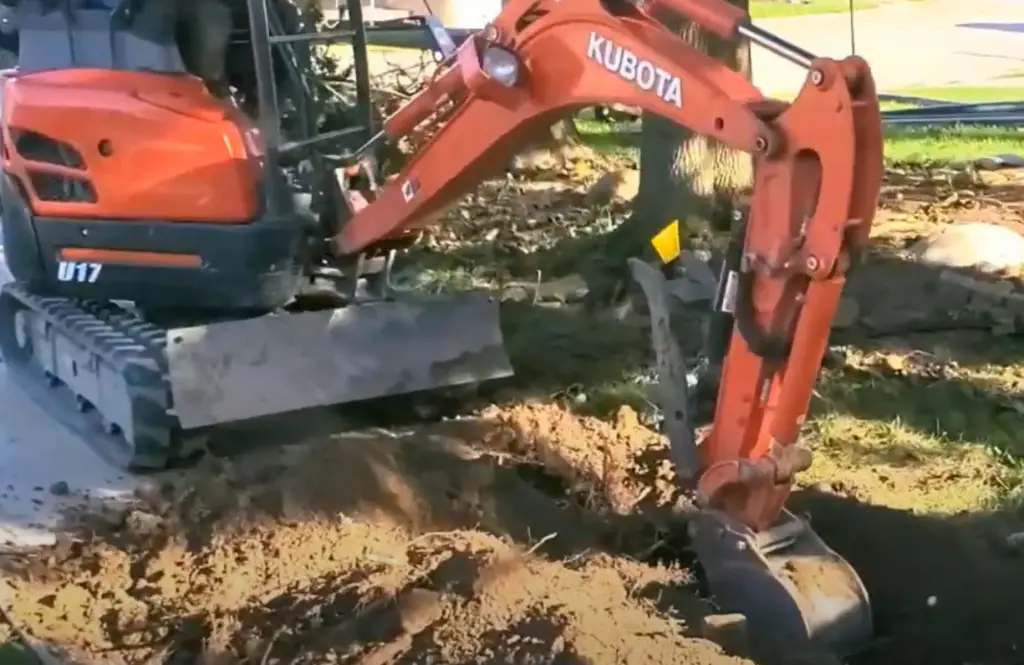
Other common reasons for excavation:
- Building a foundation for a new home or other structure;
- Installing a septic tank or leach field;
- Digging a trench for drainage pipes or cables;
- Constructing a swimming pool, pond, or other water feature;
- Excavating to remove tree stumps or large rocks;
Whatever your reason for wanting to dig, it’s important to know how deep you can actually go before hitting something that could cause problems.
Concerns Surrounding Deep Digging
Though there are many reasons why you might want to dig deep in your backyard, there are also some valid concerns that you should take into account before starting any large excavation project. After all, you don’t want to inadvertently damage your home’s foundation or run into a gas or water line.
Let’s discuss some of the things you should keep in mind before starting to dig!
Tripping Hazards
The first thing you need to consider when deciding how deep to dig in your backyard is the potential for trip hazards. If you have young children or pets, it’s important to make sure that any excavation you do will be safe for them to play around in.
Of course, if you’re planning on digging a swimming pool or other large structure, you may need to go deeper than four feet. In this case, it’s even more important to take precautions such as putting up a fence around the excavation site and making sure there is always someone supervising the area.
Foundation concerns
If you live in an area with a high water table, you need to be especially careful when excavating near your home’s foundation. Digging too close to or underneath the foundation could cause serious problems, such as:
- Collapsing the foundation;
- Damaging the structure of your home;
- Exposing the footing to water and causing it to erode;
Legal concerns
Depending on where you live, there may be laws or regulations in place that dictate how deep you can dig on your property. In some cases, you may need to obtain a permit before starting any excavation work. It’s always best to check with your local authorities before doing any digging, just to be sure.
Additionally, if you live in an area with a Homeowners Association (HOA), there may be rules in place that limit how much excavation work you can do on your property. Be sure to check your HOA’s bylaws before starting any project.
Not following the law could result in costly fines or even legal action being taken against you, so it’s definitely worth taking the time to do your research beforehand!
Underground utility concerns
One of the most important things to be aware of before you start digging is the location of any underground utility lines. This includes water, gas, sewer, and electrical lines. Hitting one of these lines could cause serious damage or even injury, so it’s crucial that you know where they are before you start digging.
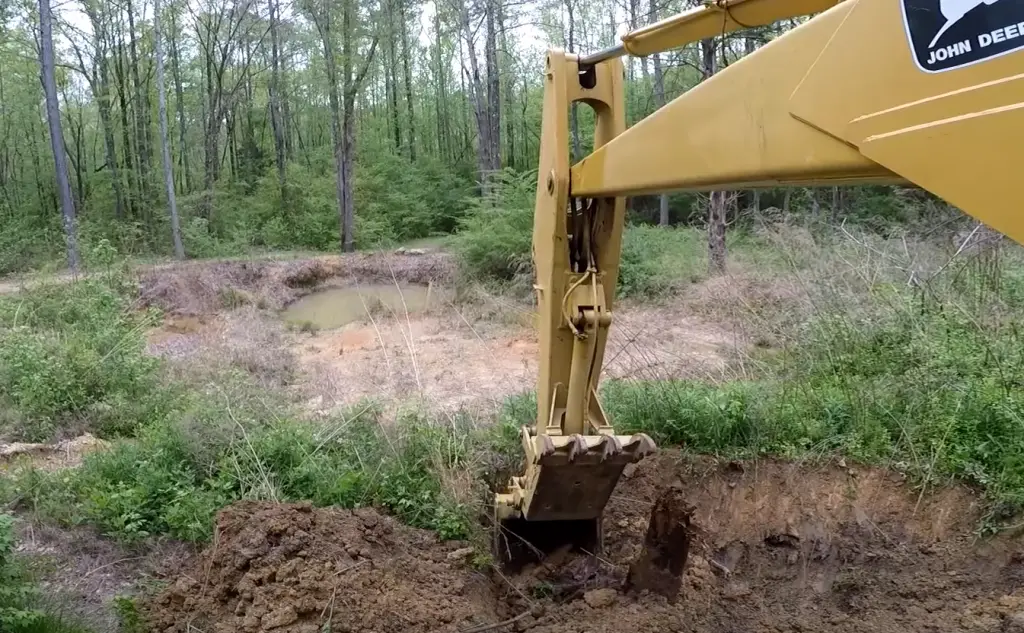
Once you know where all the utility lines are, you can start planning your excavation project with confidence! Just be sure not to dig any closer than a few feet from the marked lines.
Physical health concerns
Another thing to keep in mind before you start digging is the potential for physical injury. Digging can be strenuous work and if you’re not used to it, you could easily hurt yourself.
If you have any health concerns that might be aggravated by physical labor, it’s best to consult with your doctor before starting any excavation project. They will be able to tell you whether or not it’s safe for you to do this type of work.
Additionally, even if you are physically able to do the work, it’s important to take breaks often and stay hydrated. This will help ensure that you don’t overdo it and end up getting injured.
Depth considerations
Another thing to keep in mind when planning your excavation is the depth of the hole you’ll be digging. Depending on what you’re using the hole for, you may need to dig quite deep. For example, if you’re installing a swimming pool, you’ll need to excavate at least six feet down to accommodate the height of the pool walls.
On the other hand, if you’re just putting in a small garden shed, you probably won’t need to dig more than a few feet. But regardless of how deep you need to go, it’s always important to be aware of what’s underground before starting to dig. You don’t want to accidentally hit a buried water line or power cable!
Now that we’ve discussed some of the things you need to keep in mind before starting your excavation project, let’s talk about how to actually get started. [1] [2] [3]
How Deep Can You Dig In Your Backyard?
So, how deep can you actually dig in your backyard? The answer to this question depends on a few different factors, including the purpose of the excavation, the depth of the utility lines, and any legal restrictions in place.
How far down is it safe to dig?
Safety is always the number one concern when excavating, so it’s important to know how deep you can dig before hitting any underground utility lines. Regardless of where you live in the USA, there are a few standard depths that you should always stay above to avoid any accidents.
The first step to finding out how deep you can dig in your backyard is to determine your tolerance zone. This is the amount of space between your house and any underground utility lines. The average tolerance zone is two feet, but this can vary depending on where you live.
For example, it is generally recommended to dig 18 to 24 inches away from any power lines. If you live in an area with high water tables, you’ll also need to be mindful of any buried sewer or water lines. It’s always a good idea to call your local utility company before excavating to get the most accurate information about the depth of their lines.
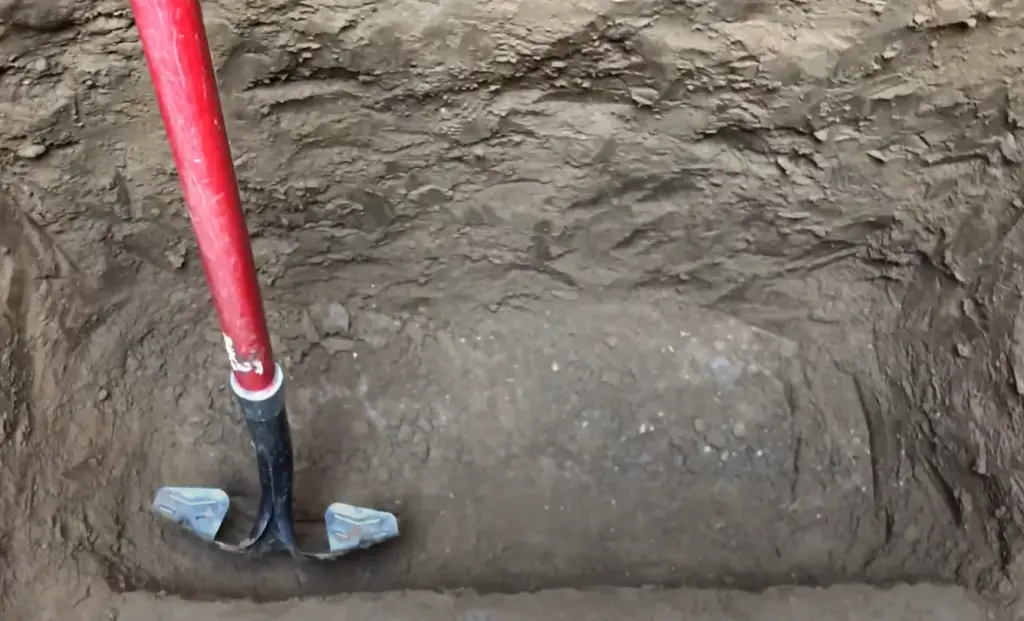
It’s important to note that you can only use hand tools when excavating within the tolerance zone. This includes a shovel, pick, or spade. If you plan on using any power tools, such as an auger or backhoe, you’ll need to stay outside of the tolerance zone.
Keep in mind that even if you follow all of the safety guidelines, deep excavation can still be dangerous. Be sure to have a plan in place in case of any accidents, and always excavate with caution. With a little bit of planning, you can safely dig as deep as you need to in your backyard. [3] [4]
How Deep Can You Dig Without a Permission?
But do you always need permission to dig deep in your backyard? The answer is – it depends. If you live in an urban area, chances are you will need some sort of permit before beginning any excavation project.
In most cases, you’ll need to submit a site plan to your local planning department that includes the proposed depth and location of the excavation. They will then review the plans and determine if a permit is required.
However, for practical purposes, you can dig holes up to 12 inches deep without a permit in most urban areas. If you want to dig deeper than that, you’ll likely need to get a permit and follow some additional guidelines. With permission, however, you can dig up to 5 feet assuming there’re no utility lines in your way.
For example, you may be required to install fencing or other safety measures around the excavation site. And, of course, you’ll need to call your utility companies beforehand to have them mark any underground lines or pipes.
But what if you live in a rural area? In general, there are fewer restrictions on digging projects in rural areas. However, it’s still a good idea to check with your local planning department to see if there are any regulations you need to follow. [3] [4]
Can You Dig a Hole Anywhere on Your Property?
Knowing where you can and cannot dig is important. You don’t want to start a hole only to have the authorities come and tell you to fill it back in because you’re on city property. In general, you should be able to dig anywhere on your own property as long as you’re not disturbing any underground utility lines. If you’re not sure where your property boundaries are, you can order a land survey from a licensed surveyor.
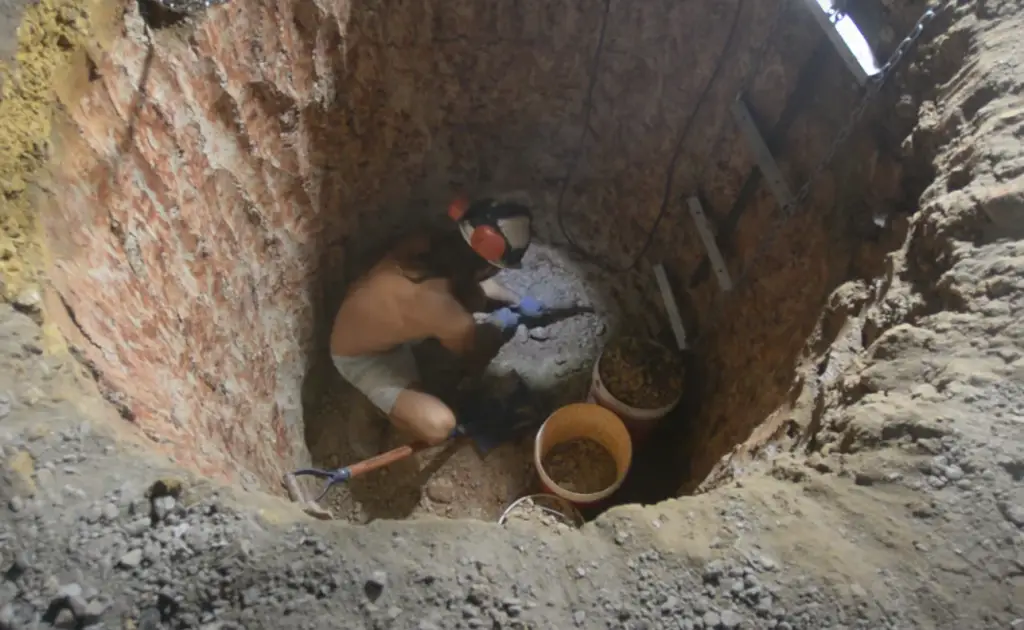
Another thing to consider is the soil type in your backyard. If you live in an area with clay soil, it’s going to be harder to dig a hole for your basement than if you live in an area with sandy soil. The type of soil also affects how deep you can dig. In general, sandy soils are easier to dig in than clay soils. [3] [4]
How Close to My House Can I Dig a Hole?
Now that we got the legal matters covered, let’s talk about how close to your house you can dig a hole. After all, you probably don’t want to damage your foundation or disrupt any underground utilities.
One utility that isn’t marked on most maps is your drainage field. This is the area where your septic system drains sewage away from your home.
In general, we suggest you dig around the drainage pipes leading away from your home. These pipes are typically located at least 2-3 feet from the foundation of your house. [3] [4]
Can I Have a Basement in My Garden
So we found out that you can dig deep in your garden if you get a permit. However, can you build a basement in your backyard? The answer is…maybe. You see, while there are no explicit rules against having a basement in your backyard, there are some that make it difficult to do so.
For one, basements require quite a bit of excavation. This can be disruptive to your neighbors if not done properly. Additionally, you will need to ensure that the foundation of your house can support the weight of a basement dug into the ground. The deeper the basement, the more support it will need from the walls and foundations. If you live in an area with high water tables, this may also pose a problem as basements are prone to flooding.
All that being said, if you have your heart set on having a basement in your backyard, it is certainly possible. Just be sure to do your research and get all the proper permits before beginning any excavation. [4]
FAQ
How far down can you dig?
This is a difficult question to answer because it depends on many factors such as the type of soil, the moisture content, the equipment you’re using, and your own strength. In general, however, most people can only dig down a few feet before they need to stop.
If you have access to heavy machinery, then you may be able to dig deeper than the average person. However, it’s still important to be aware of the potential risks involved in doing so. For example, if you hit a water main or power line, you could seriously injure yourself or damage your property.
Legality is also something to consider before you start digging. In some areas, it’s illegal to dig without a permit, and in others, there may be restrictions on how deep you can go. It’s always best to check with your local authorities before you begin any excavation project.
How deep can you dig in Texas?
The average depth you can dig in your backyard in Texas is about 5 feet. However, this number will differ depending on the type of soil you have. For example, if you live in an area with a lot of limestones, the maximum depth you can dig may only be about 2 feet.
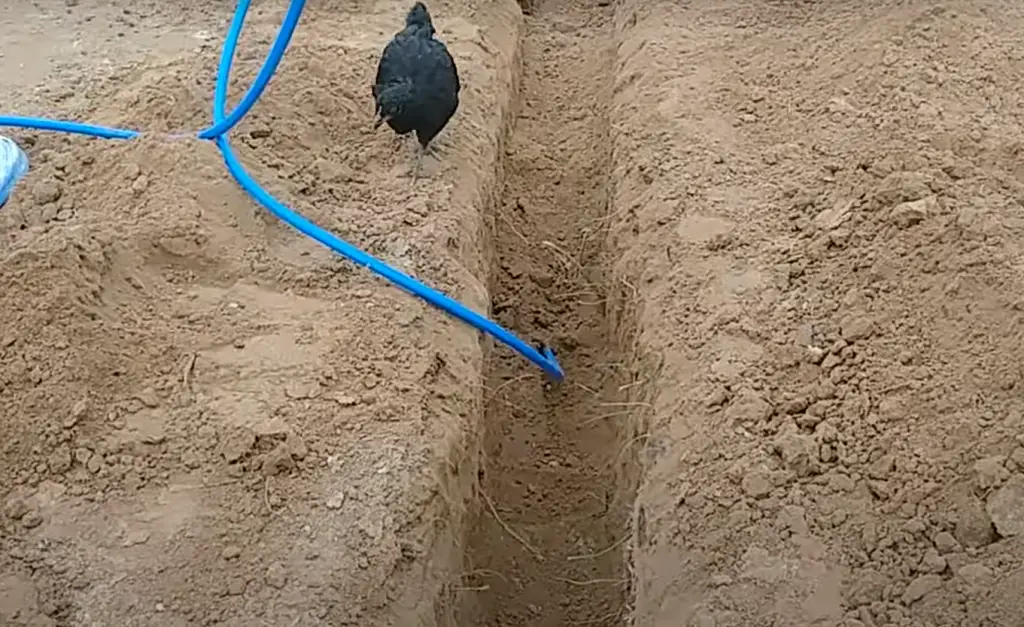
Of course, underground utilities must be respected no matter where you live. In Texas, the One Call system should be used before any digging project.
How far down can you dig with a shovel?
The average person can dig a hole about 2 feet deep with a shovel. Of course, this depends on the type of soil you’re dealing with. For example, sandy soil is much easier to dig through than clay soil.
Keep in mind, the deeper you dig, the more dangerous it becomes. Once you get down a few feet, the walls of the hole can start to collapse. This is why it’s always a good idea to have someone else with you when you’re digging a deep hole.
How deep can you dig in Florida without a permit?
The first thing you need to do is call the county office and ask them about their ordinances. Every county has different rules, but in general, you can dig without a permit as long as you’re not disturbing any utility lines. In some cases, you might need a permit if you want to build something on the property, like a shed or pool.
If you’re not sure whether or not you need a permit, it’s always best to err on the side of caution and get one. The last thing you want is to get fined or have your project stopped halfway through because you didn’t have the proper paperwork.
Generally, you are allowed to dig up to 12 inches deep without a permit in Florida. If you want to dig any deeper, you need to call the county office and get a permit.
Useful Video: How to dig a ditch as taught by an oldman
Conclusion
When it comes to deep digging in your backyard, there are a few things you need to take into account. The depth of the hole, the type of soil, and the water table are all important factors to consider. With a little planning and preparation, you can dig a hole as deep as you need without running into any problems.
No matter what hole you’re going to dig, the first thing you should do is call 811. This is the national Dig Safely hotline and they will come out to mark any underground utilities in your yard. Once you know where it’s safe to dig, you can start planning your hole.
After you obtain a permit, you will be free to dig down up to 5 feet without having to worry about damaging any underground utility lines. The best way to do this is by hand-digging a pilot hole first and then using a power auger to finish the job.
That’s it! With a little bit of planning, you can easily dig a hole as deep as you need in your backyard without any problems. Just make sure to call Dig Safely and get a permit before you start digging. And always remember to use caution when operating heavy machinery. Happy digging!
References:
- https://www.psiglobal.com.au/blog/stay-safe-while-digging-dbyd-report
- https://estimationqs.com/can-i-dig-a-hole-in-my-backyard-rules-and-regulations-for-excavations-on-your-private-property-depths-of-underground-utility-services/
- https://www.thespruce.com/miss-utilities-when-digging-in-yard-1821955
- https://busybackyard.com/how-deep-can-dig-in-backyard/





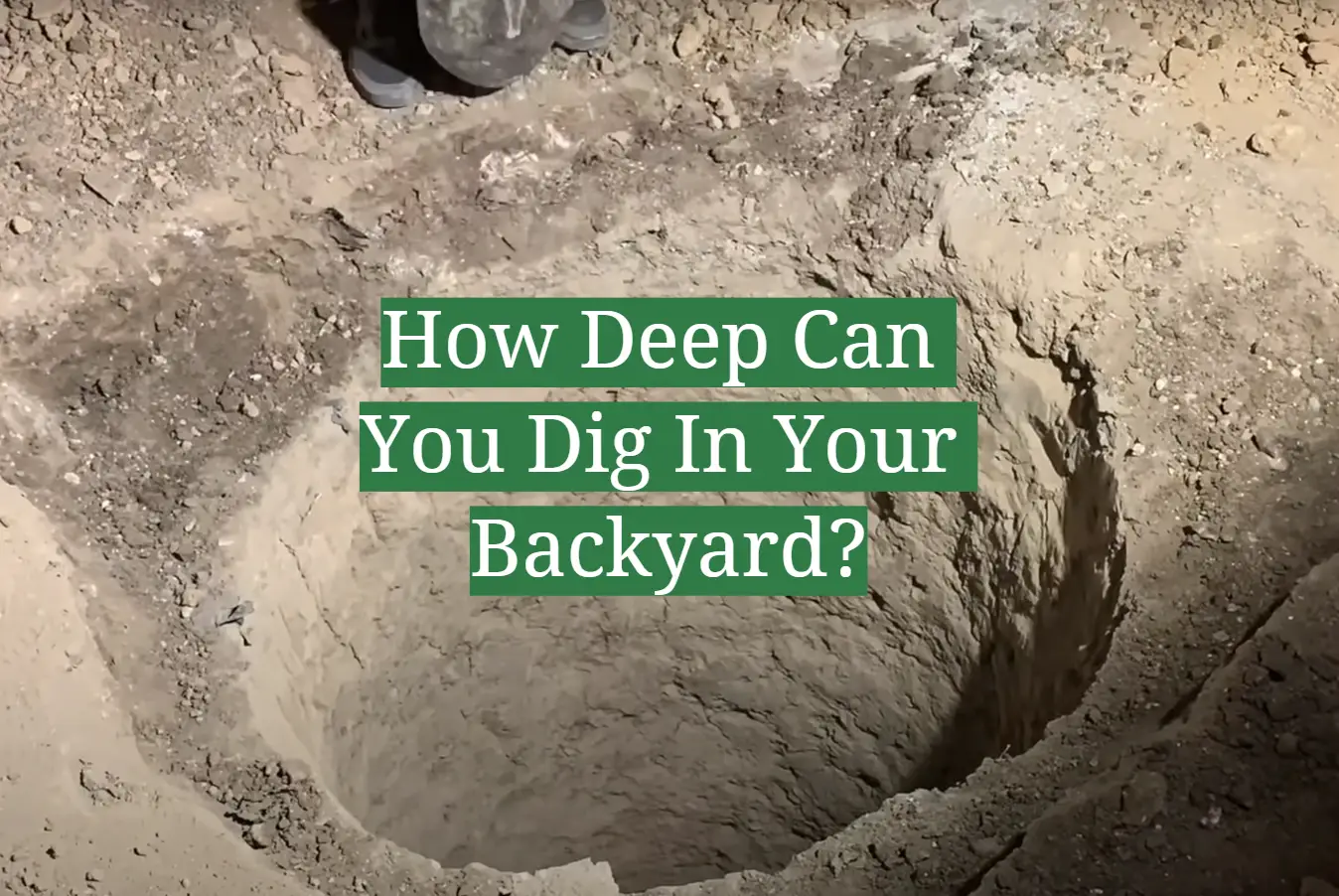




Leave a Reply
View Comments